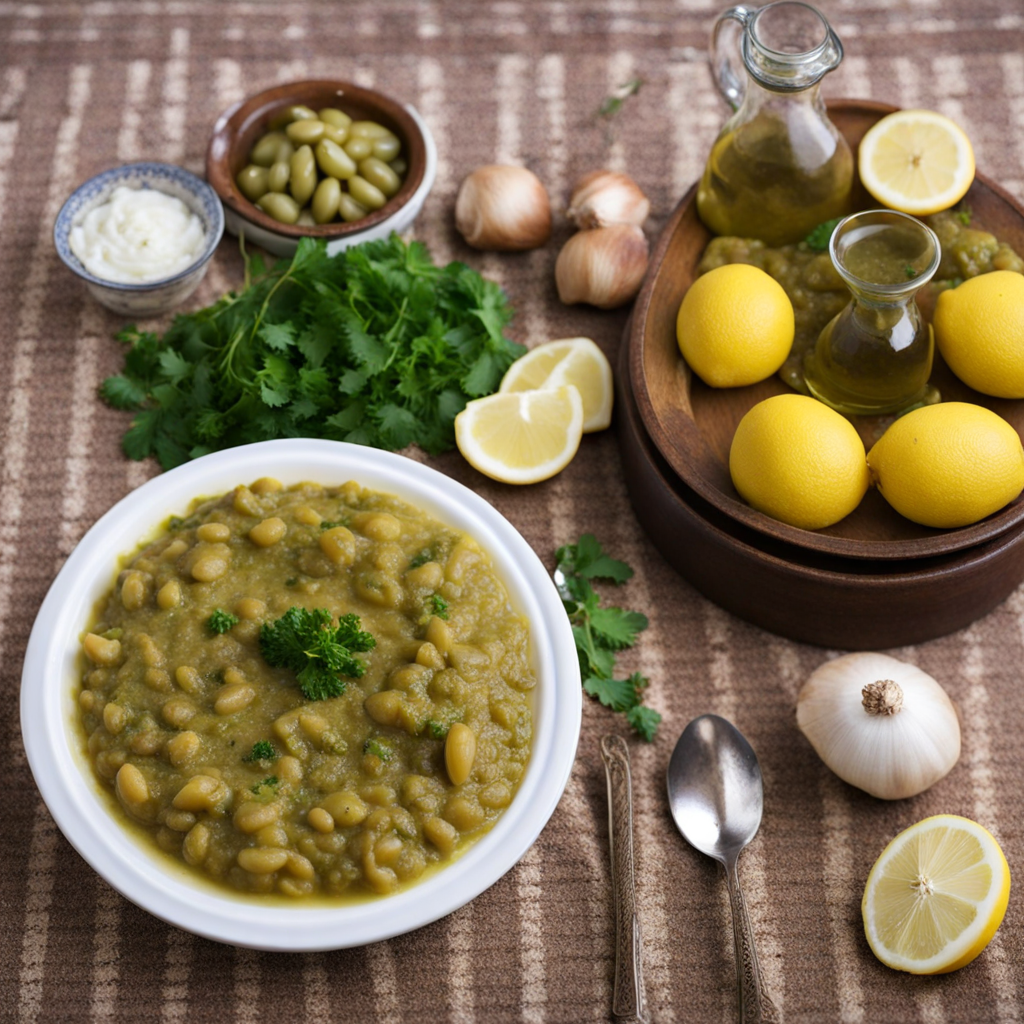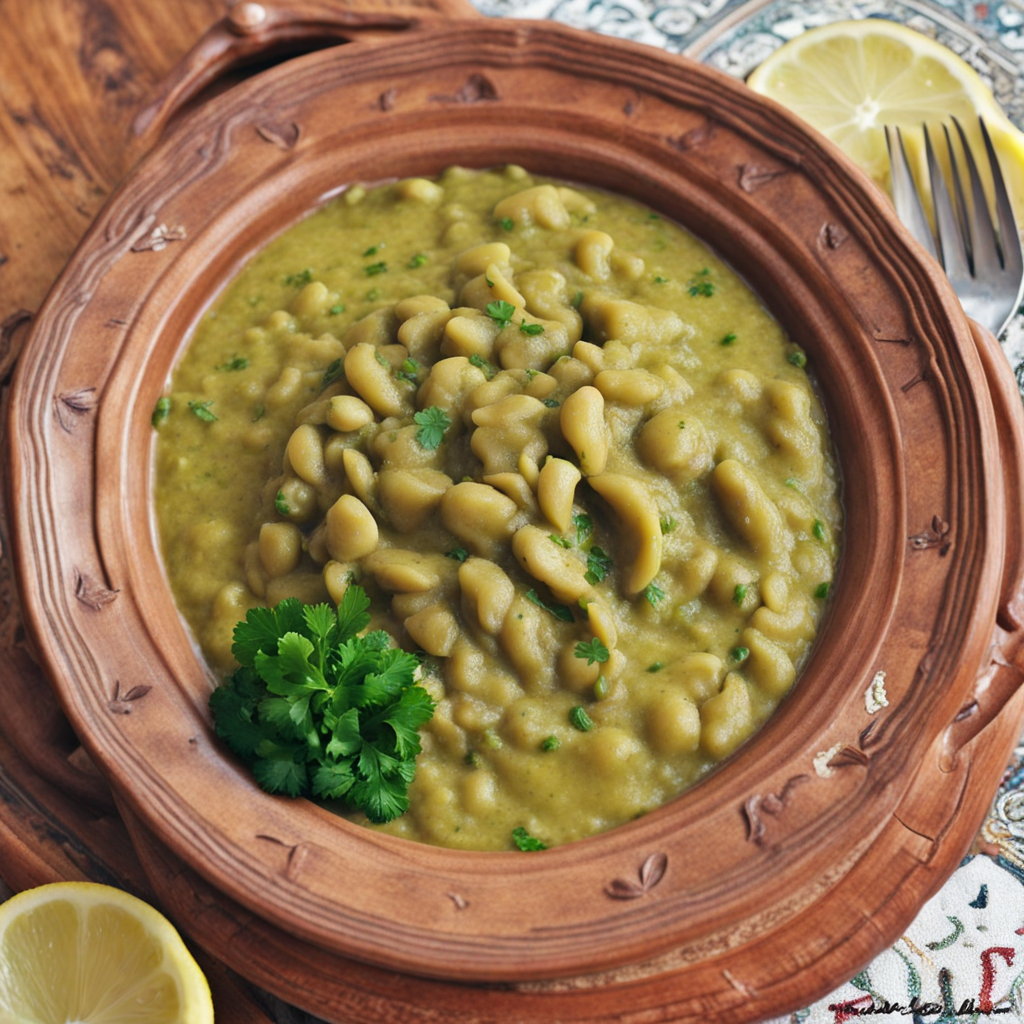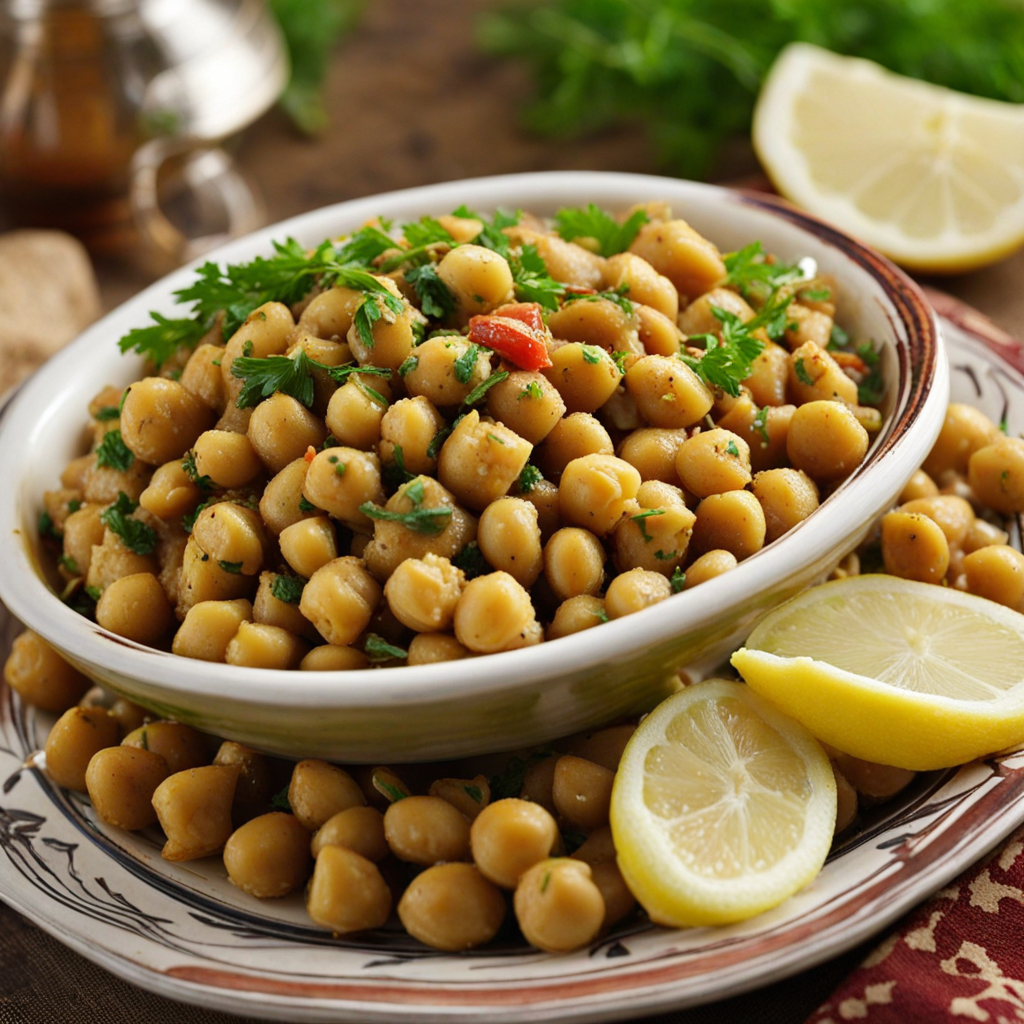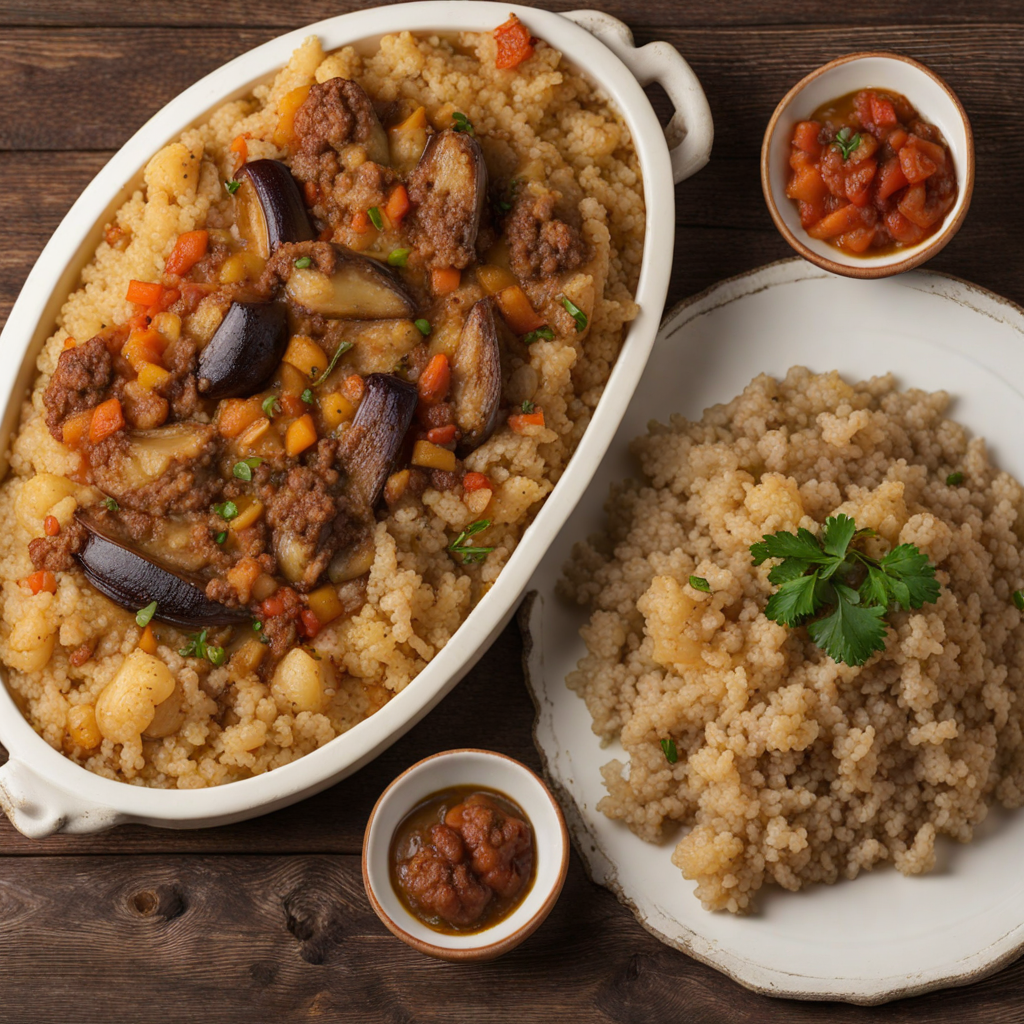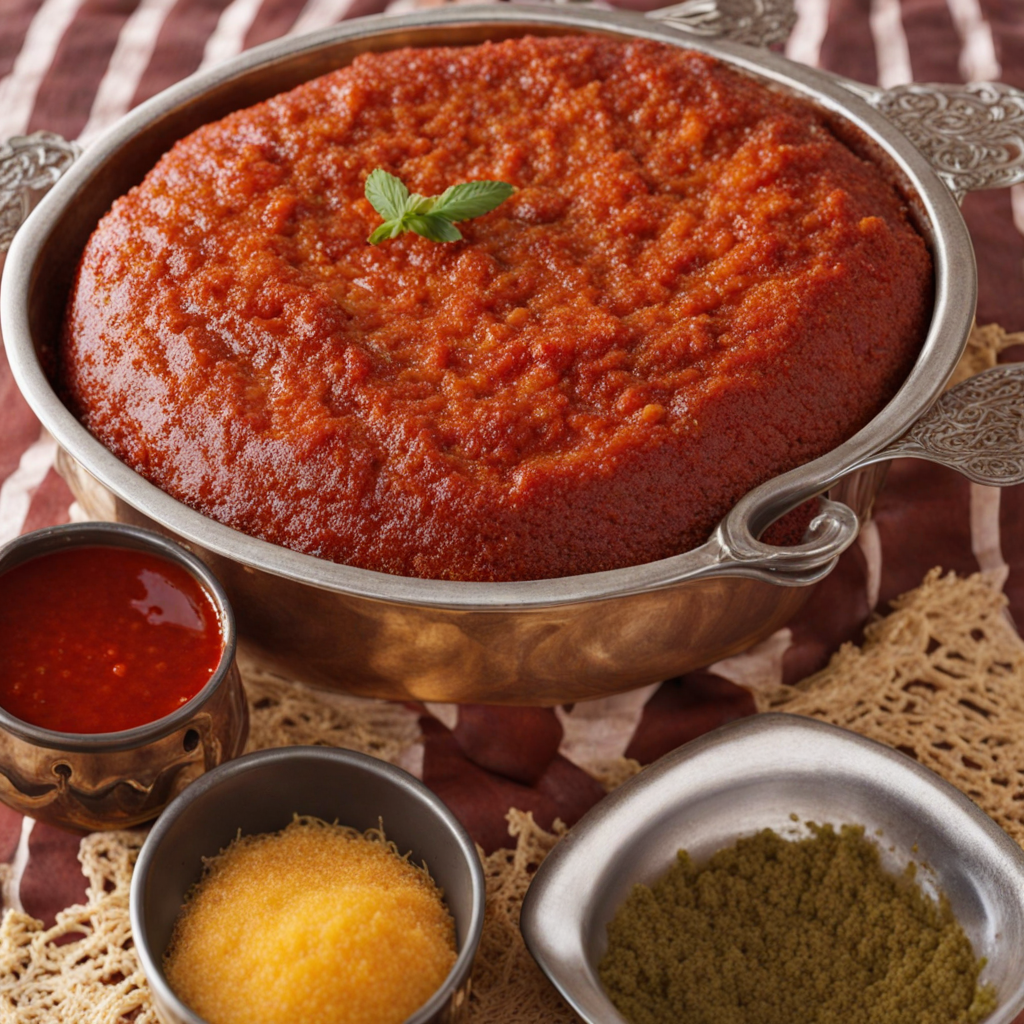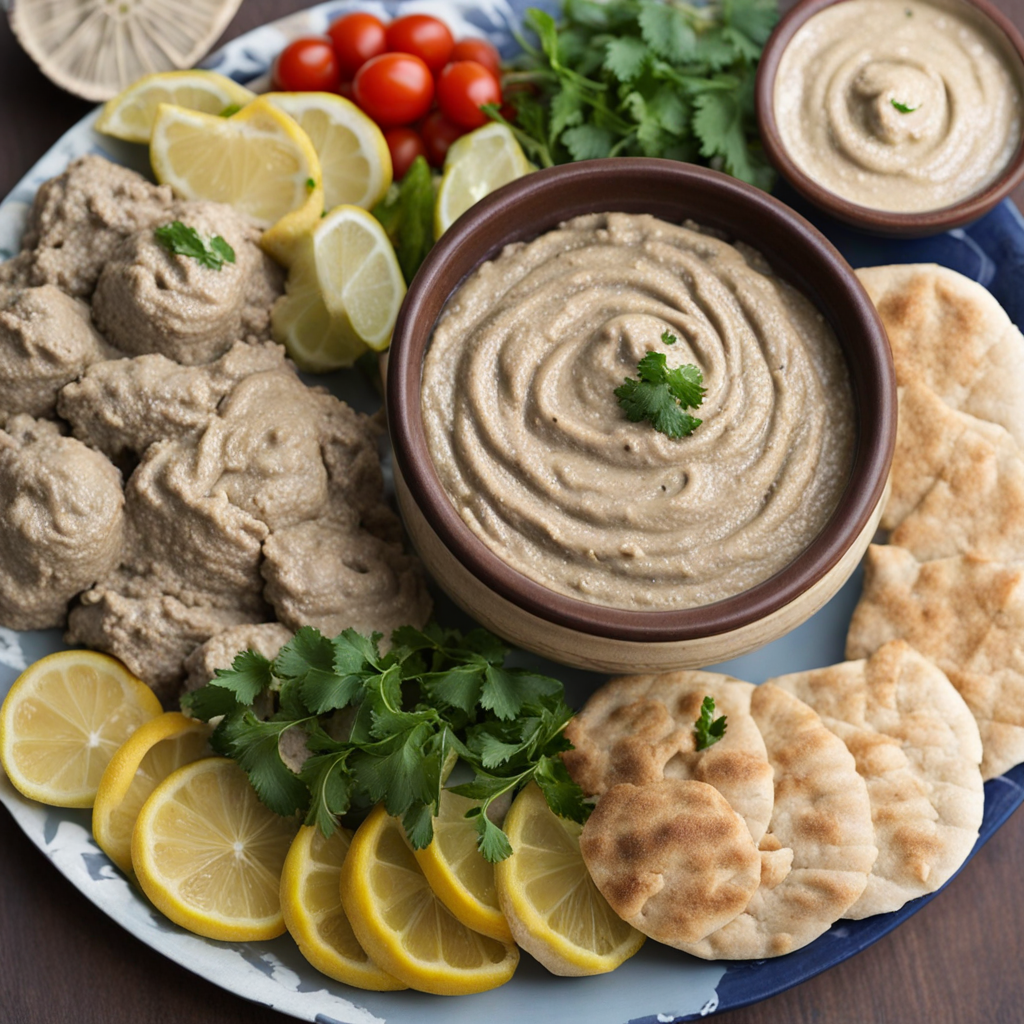Foul Mudammas
Foul Mudammas is a beloved traditional dish in Jordan, renowned for its rich and hearty flavors. At its core, this dish features fava beans, which are slowly cooked until they become tender and creamy. The beans are typically seasoned with a blend of spices, including cumin, garlic, and lemon juice, creating a perfect harmony of earthy and tangy notes. The addition of olive oil not only enhances the dish's richness but also adds a fruity undertone that beautifully complements the beans’ natural flavor. Served warm, Foul Mudammas is often garnished with fresh herbs like parsley and coriander, as well as chopped tomatoes and onions for a refreshing crunch. This combination elevates the dish, adding layers of texture and freshness. It is commonly enjoyed as a breakfast item across the Levant, often accompanied by warm pita bread, which is perfect for scooping up the beans and their flavorful toppings. The dish is not just satisfying but also nutritious, packed with protein and fiber, making it a wholesome choice for any meal. Foul Mudammas embodies the essence of Jordanian cuisine, representing simplicity and comfort while inviting you to explore its delightful taste profile. Each bite offers a taste of tradition, making it a must-try for anyone seeking to experience the authentic flavors of Jordan.
How It Became This Dish
Origins of فول مدمس فول مدمس, pronounced "ful medames," is a dish that boasts a rich history dating back to ancient times. It is primarily made from fava beans, which are cooked until tender and often seasoned with garlic, lemon juice, and olive oil. The origins of this dish are often traced back to ancient Egypt, where fava beans were cultivated as a staple food as early as 4000 BC. The beans were revered for their nutritional value and versatility, making them a vital part of the diet for both the common folk and the elite. As the trade routes expanded, the popularity of fava beans spread throughout the Levant region, including what is now Jordan. By the time the dish arrived in Jordan, it had already gained a foothold in various cultures, adapting to local tastes and customs. Today, it is a beloved breakfast staple in Jordanian cuisine, often enjoyed with pita bread, fresh vegetables, and a drizzle of tahini. \n\n Cultural Significance In Jordan, فول مدمس is more than just a dish; it is a symbol of unity and hospitality. Traditionally served in communal settings, it brings people together around the table. The act of sharing a plate of ful medames has become a ritual in many Jordanian households, emphasizing the values of kinship and community. It is often prepared for family gatherings, celebrations, and even during the holy month of Ramadan, when it serves as a nutritious meal to break the fast. Moreover, the dish holds cultural significance as a representation of Jordanian identity. In a country that has seen various influences from neighboring cultures, ful medames stands as a testament to the resilience and adaptability of local culinary traditions. It has become a source of pride for Jordanians, who often boast about their unique ways of preparing the dish, including regional variations and secret family recipes. \n\n Development Over Time Over the centuries, فول مدمس has evolved significantly, influenced by various cultural and culinary trends. During the Ottoman Empire, which controlled much of the Middle East from the 16th to the early 20th century, the dish began to incorporate diverse flavors and techniques. Spices and cooking methods from Turkish cuisine were introduced, enriching the flavor profile of the dish. In modern times, as globalization has taken hold, the dish has also seen influences from international cuisine. Street vendors and local restaurants have begun to experiment with various toppings and side dishes, incorporating elements such as pickles, spicy sauces, and even meat, thus appealing to a broader audience. While traditionalists may prefer the classic recipe, these innovations have contributed to the dish's evolving identity in contemporary Jordanian society. \n\n Ingredients and Preparation The basic ingredients of فول مدمس are deceptively simple, yet they combine to create a complex and satisfying dish. Fava beans are the star of the show, typically cooked to a creamy consistency. The cooking process often involves soaking the beans overnight to soften them, followed by slow cooking until they reach the desired texture. Seasoning is critical in the preparation of ful medames. Fresh garlic, lemon juice, and olive oil are standard additions, often accompanied by spices such as cumin and paprika. Many Jordanians also enjoy garnishing their ful with chopped parsley, diced tomatoes, and onions, enhancing the dish's visual appeal and flavor. The dish is traditionally served hot and is often accompanied by a side of fresh pita bread, which is ideal for scooping up the beans. In some variations, a dollop of tahini or yogurt is added, providing a rich, creamy contrast to the earthiness of the fava beans. \n\n Regional Variations While فول مدمس is widely recognized across the Middle East, each country has its own regional variations that reflect local tastes and ingredients. In Egypt, for instance, ful medames is often served with a hard-boiled egg or drizzled with a spicy sauce called "shatta." In Lebanon, the dish may be topped with fried onions or served with a side of pickled vegetables. In Jordan, the preparation of ful medames can differ from one region to another. For example, in rural areas, families might use more rustic cooking techniques, such as preparing the dish over an open fire, while urban settings may see a more refined approach with the use of modern kitchen appliances. Despite these differences, the core essence of the dish remains the same: a hearty, nutritious meal that can be enjoyed at any time of day. \n\n Modern-Day Presence In contemporary Jordan, فول مدمس continues to hold a prominent place on restaurant menus and in households alike. It is not uncommon to find this dish in cafes and eateries, where it is enjoyed by locals and tourists alike. Food festivals and cultural events often feature ful medames as a highlight, showcasing its importance in Jordanian culinary heritage. Moreover, with the rise of health-conscious eating, ful medames has gained further popularity due to its nutritional benefits. Rich in protein and fiber, this dish is an excellent choice for those seeking a wholesome meal. It has also found its way into vegan and vegetarian diets, appealing to a broader audience that values plant-based nutrition. In the age of social media, food enthusiasts are sharing their own interpretations of ful medames, experimenting with flavors and presentations. This trend has led to a renaissance of traditional dishes, ensuring that ful medames remains relevant in a fast-changing culinary landscape. \n\n Conclusion Through centuries of cultural exchange and culinary innovation, فول مدمس has become a beloved dish in Jordan, embodying the spirit of community and tradition. Its origins may be ancient, but its adaptability and significance in modern society ensure that it will continue to be a cherished part of Jordanian culture for generations to come. Whether enjoyed in a bustling restaurant or at a family gathering, ful medames serves as a delicious reminder of the rich tapestry of history that defines Jordanian cuisine.
You may like
Discover local flavors from Jordan


